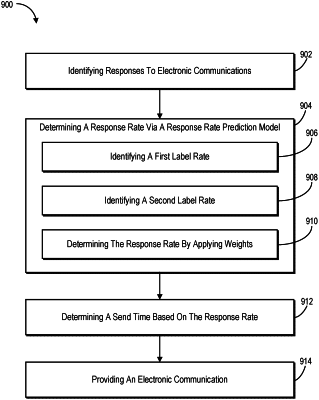| CPC G06N 20/00 (2019.01) [G06F 18/214 (2023.01); G06F 18/24155 (2023.01); G06F 40/279 (2020.01); G06N 7/01 (2023.01)] | 20 Claims |

|
1. In a digital medium environment for distributing electronic communications, a computer-implemented method of determining electronic communication send times using a Bayesian approach, the computer-implemented method comprising:
identifying one or more responses to a plurality of electronic communications transmitted to a user;
determining a response rate at a target time granularity via a response rate prediction model by:
identifying, based on responses received from a first attribute group that includes the user, a first label rate indicating a ratio between responses received from, and electronic communications delivered to, the first attribute group over a first coarse time granularity coarser than the target time granularity;
identifying, based on responses received from a second attribute group that includes the user, a second label rate indicating a ratio between responses received from, and electronic communications delivered to, the second attribute group over a second coarse time granularity coarser than the target time granularity and the first coarse time granularity; and
determining the response rate at the target time granularity by applying a user weight to the one or more responses, a first weight to the first label rate, and a second weight to the second label rate;
determining a send time based on the response rate utilizing a Bayes upper-confidence-bound send time model; and
providing an electronic communication to the user based on the send time.
|